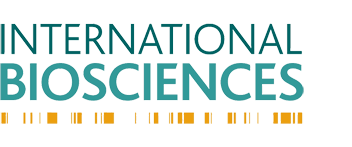The Discovery of DNA
It was realized in the 1940s that DNA molecules are passed down through the generations of a family. In 1953 Watson and Crick elucidated the chemical structure of this molecule as a twisted ladder (a ‘helix’) made of two strands. DNA occurs in all the cells of our body, it is our blueprint! The strands of DNA contain information in the form of a code, which in turn determines our individual traits and characteristics. This code, the genetic code, is the order of four types of DNA building block. When the two strands of DNA separate, each building block (‘base’) accurately templates a corresponding base on the newly made strand of DNA so that information is not lost but is instead duplicated and preserved.
Testing for similarities between DNA (deoxyribonucleic acid) samples from two people allows family relationships to be established – or disproved – to an extraordinarily high degree of certainty. A common use for a DNA test is to establish if a man is the biological father of a child; this is known as a paternity test. However, there are other uses for the science of DNA testing (also called genotyping), these include forensic analysis of human DNA samples, and tracking relationships amongst domesticated animals.
Our Unique Genetic Makeup
The order in which the bases occur in DNA is referred to as the DNA sequence. Each person is unique and just as people differ in their fingerprints, they also have a unique and slightly different DNA sequence. Half of a person’s DNA is received from their mother, and half is received from the father. However, while fingerprints have no value for establishing family relationships, the minor variations in DNA sequence are extraordinarily useful for this purpose. All cells of our body contain DNA, skin cells from the lining of the cheek provide a simple and convenient source of material.
DNA is purified from these cells and the minor variations are read out as a type of bar-code by a machine. When the net DNA ‘barcodes’ from family members are lined up next to each other it becomes clear when a child is related to biological parents because half the stripes in the bar-code like signature will line up with those of the mother, and half will line up with those of the father. On the other hand, in the absence of a biological relationship, the DNA signatures from a child and from a potential parent are not found to have 50% in common. It may be appreciated that DNA testing is the most convenient and scientifically accurate method of determining relationships between people.
Understanding Your DNA Test Results
In order to understand your DNA test results we have created a useful and easy to understand page for you. This will help you quickly follow the report we will send you once your results have been completed. Click here.

